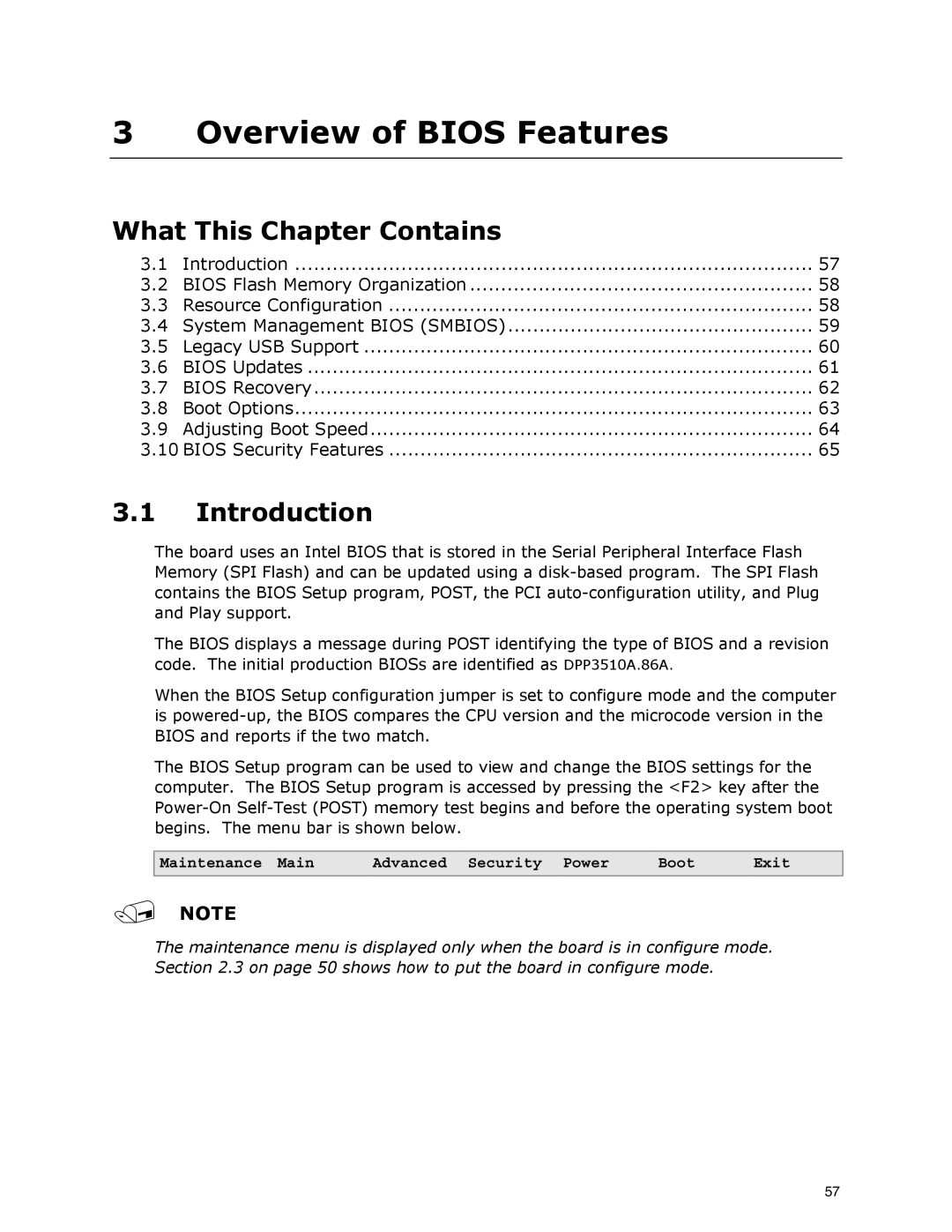3 Overview of BIOS Features
What This Chapter Contains |
| |
3.1 | Introduction | 57 |
3.2 | BIOS Flash Memory Organization | 58 |
3.3 | Resource Configuration | 58 |
3.4 | System Management BIOS (SMBIOS) | 59 |
3.5 | Legacy USB Support | 60 |
3.6 | BIOS Updates | 61 |
3.7 | BIOS Recovery | 62 |
3.8 | Boot Options | 63 |
3.9 | Adjusting Boot Speed | 64 |
3.10 BIOS Security Features | 65 | |
3.1Introduction
The board uses an Intel BIOS that is stored in the Serial Peripheral Interface Flash Memory (SPI Flash) and can be updated using a
The BIOS displays a message during POST identifying the type of BIOS and a revision code. The initial production BIOSs are identified as DPP3510A.86A.
When the BIOS Setup configuration jumper is set to configure mode and the computer is
The BIOS Setup program can be used to view and change the BIOS settings for the computer. The BIOS Setup program is accessed by pressing the <F2> key after the
Maintenance | Main | Advanced | Security | Power | Boot | Exit |
|
|
|
|
|
|
|
NOTE
The maintenance menu is displayed only when the board is in configure mode. Section 2.3 on page 50 shows how to put the board in configure mode.
57
